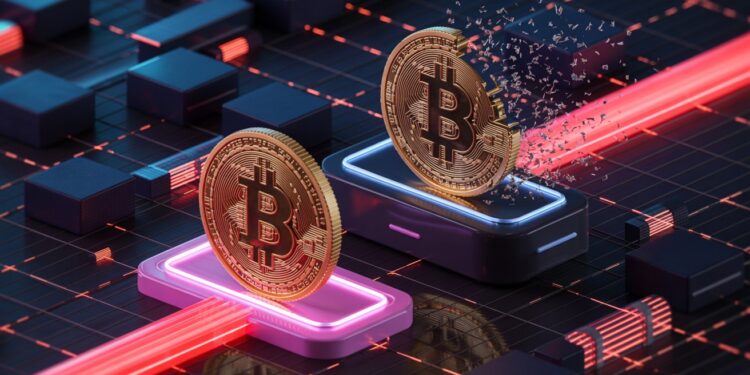Introduction
Digital currencies like Bitcoin and Ethereum rely on blockchain technology to keep transactions safe. This tech makes it possible to transfer digital money quickly and securely without banks. But there’s a sneaky problem called double spending that can break that trust. It’s when someone tries to spend the same digital coin twice—like fooling the system. For investors, developers, and users, understanding double spending is crucial. If we ignore it, the integrity of cryptocurrencies could suffer. This article will explain what double spending is, how it works, and the ways to prevent it effectively.
What is Double Spending?
Definition and Core Concept
Double spending happens when someone tries to use the same digital asset in more than one transaction. Since digital money exists as code, it isn’t a physical coin or dollar bill that you can only spend once. Instead, it’s more like copying a file on your computer. The hacker’s goal is to trick the system into thinking they have multiple copies of the same token. If successful, they can spend that token multiple times, causing financial harm.
Historical Background
In the early days of online cash, problems with double spending were common. Systems like DigiCash and eCash tried to fix it, but they had limitations. These early attempts struggled to prevent copies of digital money from being spent more than once. When blockchain technology emerged, it solved many of these issues by making transactions transparent and hard to tamper with. That was a major step forward in stopping double spending in cryptocurrencies.
Why Double Spending Is a Threat
Double spending could cause big problems. For users, it means losing trust in the system and possibly losing money. For businesses, accepting digital coins that can be spent twice risks financial losses. It also threatens the stability of the entire market if confidence drops. Regulators worry because hackers might use double spending to manipulate prices or commit fraud. For these reasons, preventing double spending is a top priority for anyone involved in cryptocurrency.
How Double Spending Works
The Mechanics of Double Spending
Imagine you have a digital coin, and you want to spend it twice. First, you send it to a merchant. Then, before the merchant’s transaction gets confirmed, you send the same coin to another party. If the network doesn’t spot this double spend in time, you could get both goods or services without actually paying twice. Attackers often use specific methods to pull this off without detection.
Types of Double Spending Attacks
- Race Attack: The attacker quickly broadcasts two transactions claiming to spend the same coin. If the network confirms the first, the second gets ignored. But if the second transaction is faster or gets confirmed first, the fraud succeeds.
- Finney Attack: Named after Hal Finney, this attack involves a miner who pre-mines a transaction. They then use the pre-mined block to spend the same coin on another transaction before it reaches the network.
- 51% Attack: When a single miner or group controls over half the hash rate, they can rewrite transaction history. This power allows them to reverse transactions or double spend coins on the blockchain.
Factors Enabling Double Spending
- Slow transaction confirmations make it easier to double spend.
- Less decentralized networks with fewer miners or validators are more vulnerable.
- Vulnerable blockchain protocols that don’t require enough confirmations can be exploited.
Technologies and Strategies to Prevent Double Spending
Proof of Work and Proof of Stake
Proof of Work (PoW), used by Bitcoin, requires miners to solve complex puzzles. This makes double spending extremely difficult because changing past transactions is computationally too expensive. Proof of Stake (PoS) relies on validators holding tokens, which discourages attempts to rewrite the ledger. Both mechanisms help maintain trust and prevent double spending.
Blockchain Confirmations
Every transaction needs confirmations—blocks added after the transaction’s block—to be considered final. Usually, the more confirmations, the safer the transaction. For small payments, 1-2 confirmations might suffice. But for larger transactions, waiting for 6 or more is smarter. Confirmations act like checkpoints to prevent double spending.
Additional Security Measures
- Cryptographic signatures confirm that only the owner can spend their coins.
- Time-lock transactions prevent spending before a certain time.
- Merchants and platforms employ fraud detection tools to flag suspicious activity and prevent double spending before completing a sale.
Role of Honest Nodes and Miners
Honest participants in the network validate transactions and add them to the blockchain. They act as guards, making sure no one cheats. Miners and validators have incentives to keep the network honest—if they try to double spend, they risk losing their rewards and reputation.
Real-World Incidents and Case Studies
Notable Double Spending Cases
One infamous case was the Mt. Gox exchange hack, where stolen Bitcoin was used in double spending attempts. Attackers exploited vulnerabilities in the system to double spend coins before the network could catch up. Such events highlight how hackers target weak points in the network.
Other incidents involved exploiting flaws in blockchain protocols or waiting for low confirmation transactions to double spend. These lessons prompted industry upgrades and better security practices.
Impact on Market and Users
When double spending occurs, users and businesses suffer financial loss and damage to reputation. Trust in the affected platforms drops immediately. Post-attack, many firms overhaul their security to prevent future double spending attacks. It shows how critical ongoing security efforts are in crypto.
Expert Insights and Future Outlook
Industry Perspectives
Security experts warn that as blockchain technology grows, so do efforts to find new ways to double spend. Some say advancements like Layer 2 solutions and cross-chain security help stop this threat. Developers are constantly working on smarter ways to make transactions safer.
Evolving Technologies and Solutions
Emerging solutions include oracles that verify real-world data and Layer 2 protocols that handle transactions off-chain before settling on the main chain. These innovations make double spending more difficult and help keep cryptocurrencies secure. But new attack vectors always stay on the horizon.
Regulation and Policy Developments
Regulators focus on protecting consumers from double spending scams. They push for stricter rules, better auditing, and transparency in crypto platforms. These steps strengthen security and build trust over time. Future policies may require exchanges to adopt advanced safety measures against double spending.
Conclusion
Double spending remains a real danger in the world of digital currency. It can cause serious financial damage and undermine trust in the whole system. But with strong security tools like blockchain confirmation, cryptography, and honest network participants, we can keep this threat in check. Users and businesses should always wait for enough confirmations and choose platforms with solid security. Staying updated on new threats and technological advances is also key. In the end, transparency and strong tech make digital currencies safer for everyone. Always think twice before sending crypto—double spending risks are real, but preventable.
Join Us : Twitter | Website | GitHub | Telegram | Facebook | YouTube























